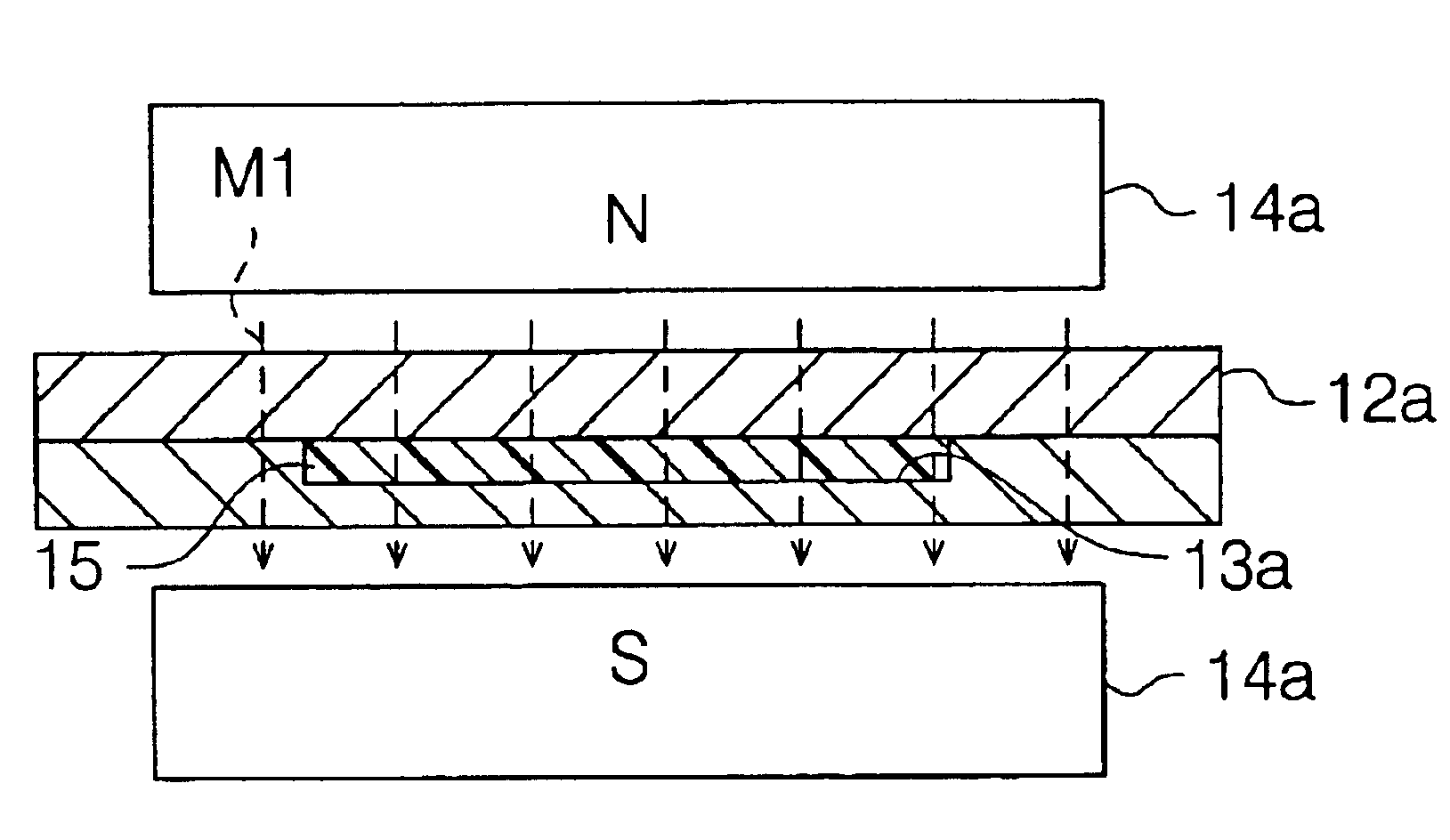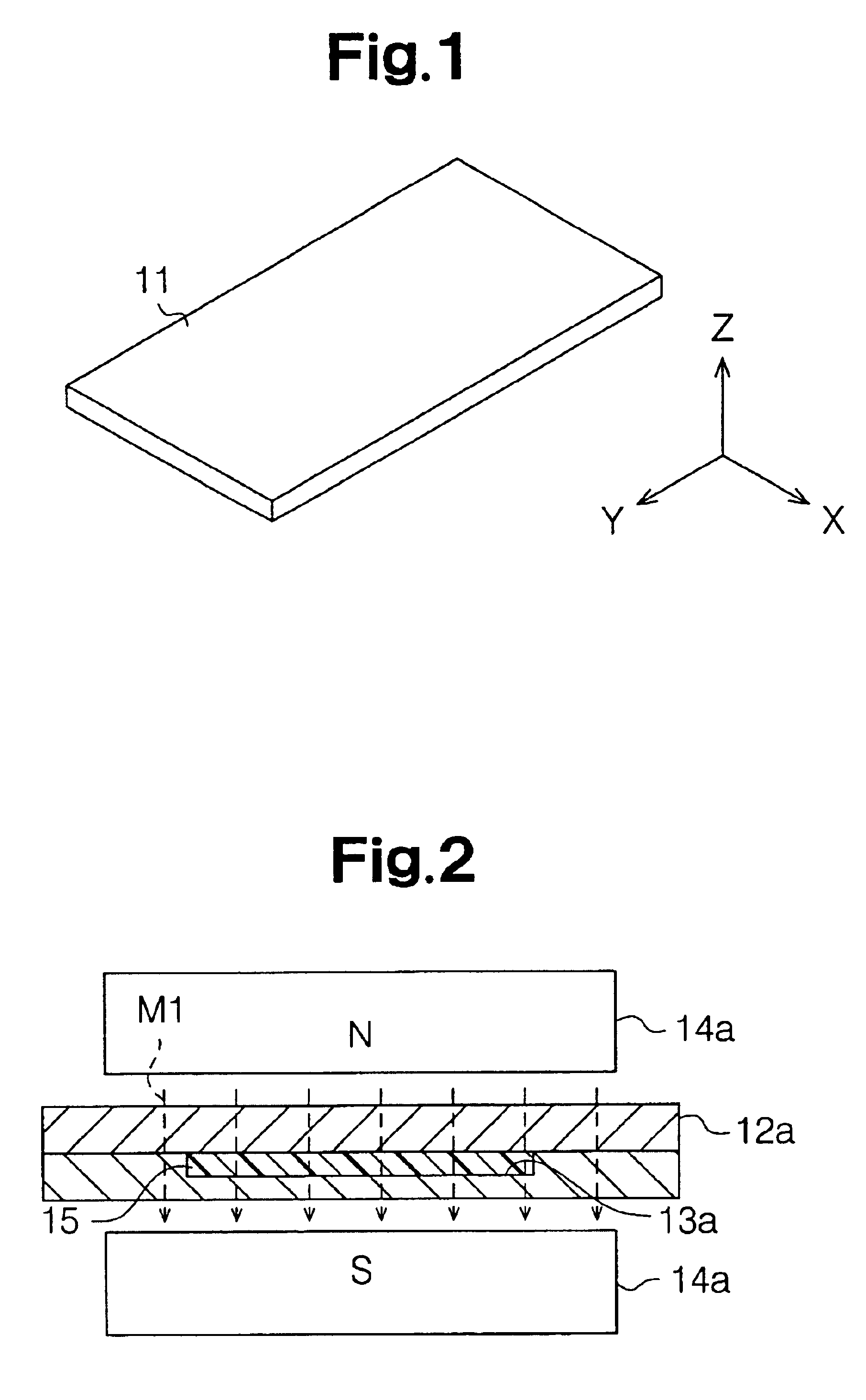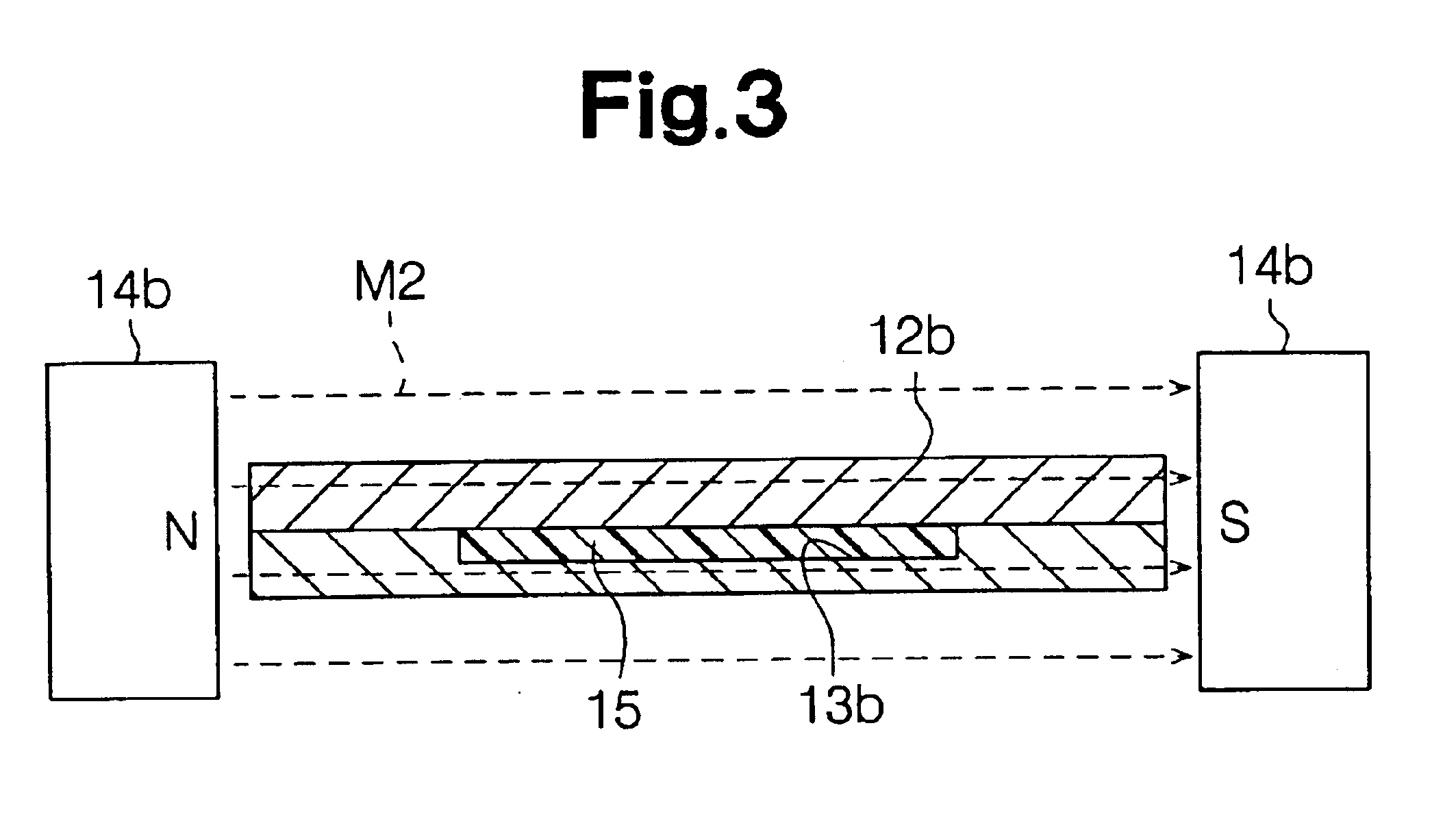Thermal conductive polymer molded article and method for producing the same
- Summary
- Abstract
- Description
- Claims
- Application Information
AI Technical Summary
Benefits of technology
Problems solved by technology
Method used
Image
Examples
example 1
[0063]Pellets of wholly aromatic polyester (Rodrun LC5000, manufactured by UNITIKA LTD.; constituent units: terephthalic acid, 4-hydroxybenzoic acid, and ethylene glycol) as a thermotropic liquid crystalline polymer were dehumidified and dried, and subjected to injection molding to prepare a molded article in the form of sheet having a size of 50 mm (length)×50 mm (width)×2 mm (thickness). The sheet-form molded article prepared was placed in a cavity heated to 340° C., and melted while applying thereto a magnetic field at a magnetic flux density of 2.5 T. In this instance, the magnetic field was adjusted so that the direction of the magnetic lines of force was parallel to the thickness direction of the sheet-form molded article. The resultant sheet-form molded article was held in the magnetic field for 20 minutes, and then solidified by cooling to room temperature to produce a thermal conductive sheet having a thickness of 2 mm, thus obtaining a thermal conductive polymer molded art...
examples 2 to 4
[0064]Wholly aromatic polyester was subjected to injection molding in the same manner as in Example 1 to prepare a sheet-form molded article. Thermal conductive polymer molded articles were individually produced in accordance with substantially the same procedure as in Example 1 except that the magnetic flux density was individually changed to 5 T, 10 T, and 15 T.
PUM
| Property | Measurement | Unit |
|---|---|---|
| Percent by mass | aaaaa | aaaaa |
| Percent by mass | aaaaa | aaaaa |
| Density | aaaaa | aaaaa |
Abstract
Description
Claims
Application Information
 Login to view more
Login to view more - R&D Engineer
- R&D Manager
- IP Professional
- Industry Leading Data Capabilities
- Powerful AI technology
- Patent DNA Extraction
Browse by: Latest US Patents, China's latest patents, Technical Efficacy Thesaurus, Application Domain, Technology Topic.
© 2024 PatSnap. All rights reserved.Legal|Privacy policy|Modern Slavery Act Transparency Statement|Sitemap



